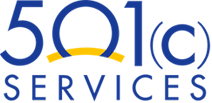
Summary
Human Resource Information Systems (HRIS) streamline critical HR tasks, such as recruiting, onboarding, payroll, compliance, and policy management, by centralizing and automating processes. For nonprofits and other mission-driven organizations, the decision to adopt an HRIS often comes down to balancing efficiency gains against cost, scalability, and staff adoption. This article explores the advantages of HRIS tools (automation, handling compliance complexities, and employee self-service), the common risks (scalability, goal-setting, and training), and how to determine the right time for implementation. By aligning HRIS adoption with measurable goals and organizational growth, leaders can make more informed decisions and avoid costly missteps.
Why HRIS Matters
Any organization, whether it be public, private, or nonprofit, can struggle with scale. While scale can be a proxy for success, it also has a way of making even routine tasks more difficult, more expensive, and more prone to mistakes. Although nonprofits and other mission-driven organizations may not scale as rapidly as other organizations, their funding structures typically require them to be judicious about resource usage. For this reason, decisions like choosing a human resources information system can be tricky, even at smaller organizations.
The creators of HRIS products typically pitch them as all-inclusive tools which can save time while improving outcomes, but they can also present risks, implementation issues, and costs which limit their return at scale. Choosing an HRIS is not always straightforward, and it can be helpful to understand the capabilities of each and to have a solid understanding of your organization’s current and future needs. Here are some of the key areas you might look at when exploring HRIS solutions.
What is an HRIS?
 An HRIS is a technical name for a set of tools designed to automate and facilitate consistency in human resources work. The exact specifications and systems will differ from vendor to vendor, but some of the most common applications are recruitment and hiring, new hire onboarding, payroll management, internal document distribution, and many other HR tasks. The general value proposition is that by building consistent and automated processes, HR teams are freed up to do more complex tasks and are also less likely to make mistakes or miss critical steps.
An HRIS is a technical name for a set of tools designed to automate and facilitate consistency in human resources work. The exact specifications and systems will differ from vendor to vendor, but some of the most common applications are recruitment and hiring, new hire onboarding, payroll management, internal document distribution, and many other HR tasks. The general value proposition is that by building consistent and automated processes, HR teams are freed up to do more complex tasks and are also less likely to make mistakes or miss critical steps.
For example, if your hiring process involves multiple cross-team interviews, it can be a challenge to manually collect feedback from each interviewer and consolidate them in one place. Having a system which handles this can ensure that each stakeholder is automatically prompted to provide input and the decisionmakers have access to all the relevant information.
Key advantages of using an HRIS
Here are some of the primary reasons organizations choose to incorporate one of these systems:
- Automating repetitive tasks: A lot of HR functions can be highly repetitive in nature, which means at a certain scale they can begin to take up too much time. Discrete tasks like managing time off, payroll, and other info can be centralized on the HRIS platform.
- Handling edge cases: Some HRIS platforms—particularly mid- to enterprise-level—are built to account for the complexities of the modern workplace, for example, managing state taxes for remote employees, offering flexible benefits management, handling different types of paid and unpaid leave allowed in each state, and so on.
- Predictable self-service: Having a single source for policies, the employee handbook, expense reports, and all other internal documentation can make these tasks much easier for your staff. Once they’re familiar with the HRIS platform, they can go to it for everything from time management to the current org chart.
Risks of using HRIS
These platforms are not “plug in and play” solutions, and they typically need to be configured to suit each organization. Here are some of the risks and problems organizations can run into:
- Lack of scalability: A common problem with these kinds of platforms is choosing a tool or agreeing to a price point that doesn’t make sense at scale. Although this is less common at nonprofits, if you foresee your organization growing a lot in the near future, it’s important to look at the pricing structure and ensure that the platform won’t become prohibitively expensive as your organization gets larger.
- Lack of goals and follow-through: Some organizations buy these tools and don’t set measurable goals to assess whether the platform is worth it. If you’re purchasing an HRIS to help make recruiting more efficient, it’s a good idea to set a baseline of performance to see if the HRIS is helping you improve.
- Lack of training and adoption: Even the most well-constructed HRIS suite is useless if your team doesn’t know how to use it. Providing enough training and resources for team members to understand the structure of the HRIS solution is essential.
When should you adopt an HRIS tool?
Unfortunately, there is no one-size-fits-all process to determine the value and viability of an HRIS tool. Exploring your options early on can help with adoption, as training a smaller team can sometimes be simpler than onboarding a larger one. At the same time, small nonprofits may struggle with capacity if they lack a dedicated HR function. Locking in on a vendor too early can also become a challenge if your organization plans to grow a lot, as they may not have features or pricing structures that meet your needs.
Even if you have a small team, if your HR employees are frequently blocked by repetitive tasks, deal with a lot of edge cases, such as those which come with fully remote teams, or if you plan to grow significantly, it can be beneficial to trial an HRIS tool. Whatever the issue, you can determine the key performance indicators (KPIs) you’d like to see improved, such as the amount of time it takes for a job candidate to move through the hiring process, and then you can use this to determine if the HRIS tool is helping enough to merit the cost.
Using an HRIS tool can provide useful insights, as many systems include reporting and visualization features which can track things like onboarding speed, new hire performance and retention, and other measurements of HR performance. Shopping around and looking at different options can also be helpful, particularly as nonprofits do not have the same priorities or growth goals as for-profit organizations.
About Us
For more than 40 years, 501(c) Services has been a leader in offering solutions for unemployment costs, claims management, and HR support to nonprofit organizations. Two of our most popular programs are the 501(c) Agencies Trust and 501(c) HR Services. We understand the importance of compliance and accuracy and are committed to providing our clients with customized plans that fit their needs.
Contact us today to see if your organization could benefit from our services.
Are you already working with us and need assistance with an HR or unemployment issue? Contact us here.
The information contained in this article is not a substitute for legal advice or counsel and has been pulled from multiple sources.
(Images by Maxxstudio and Boyarkinamarina)




